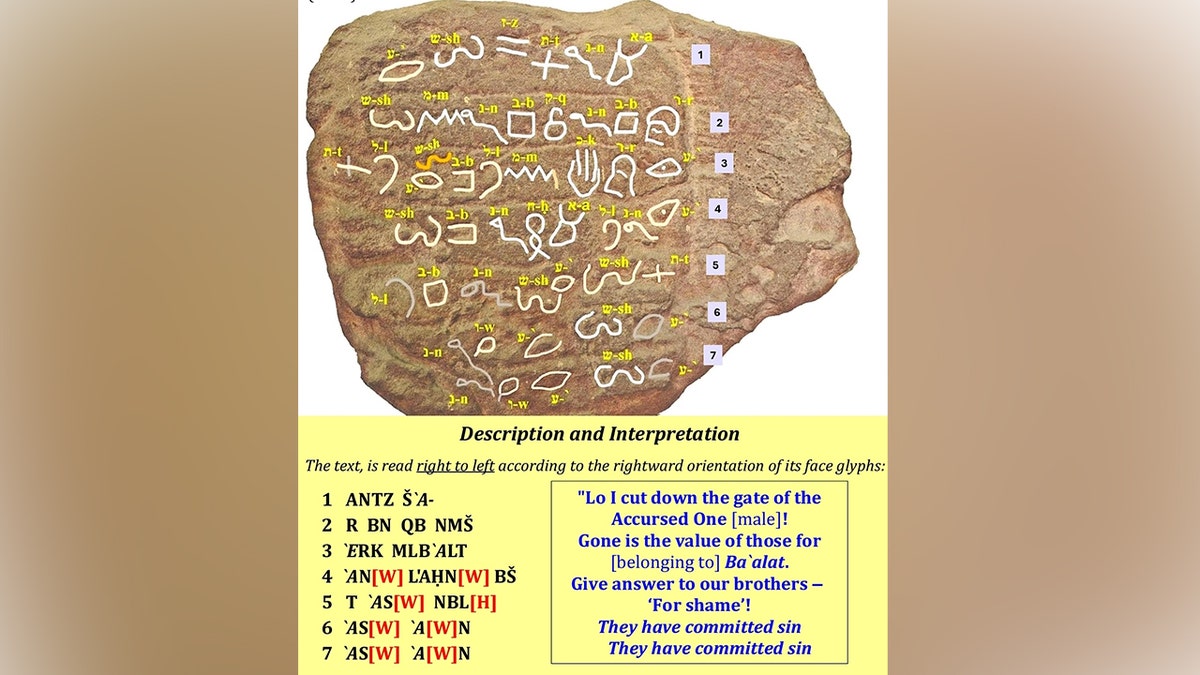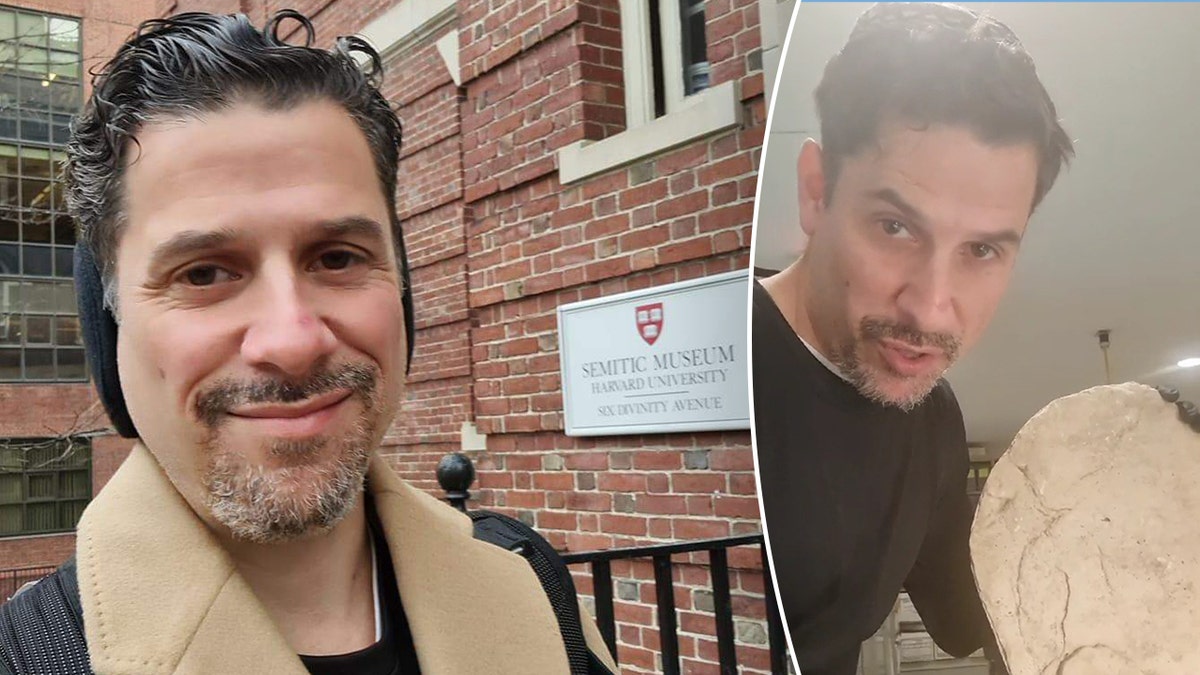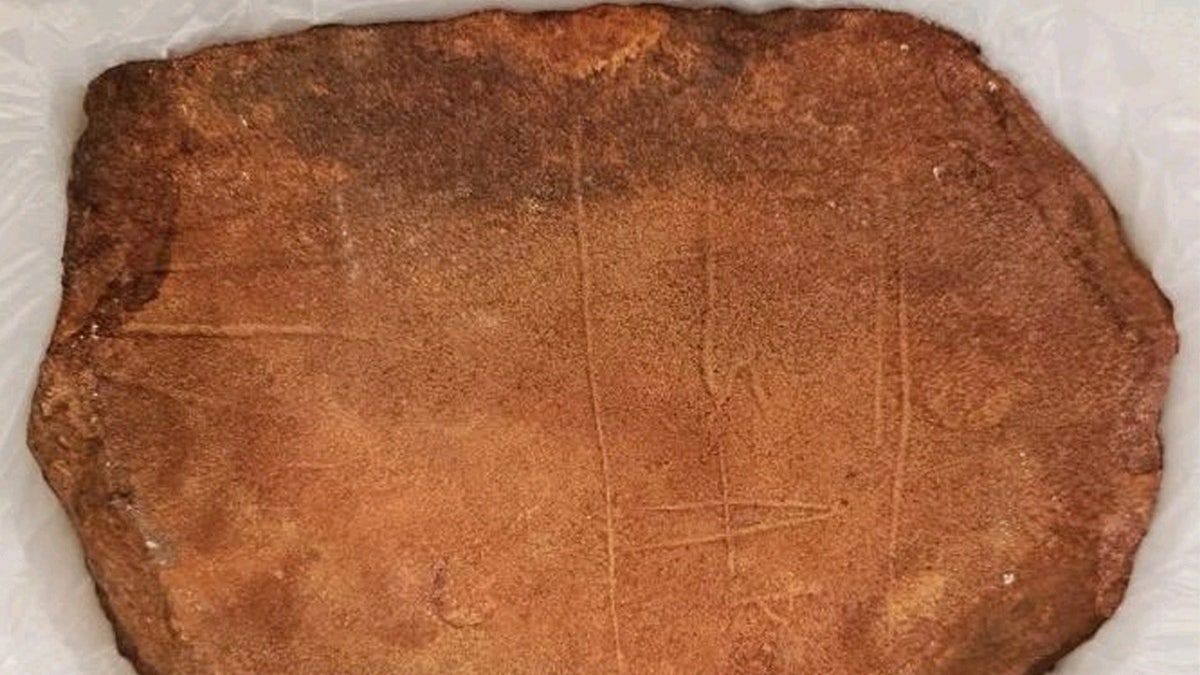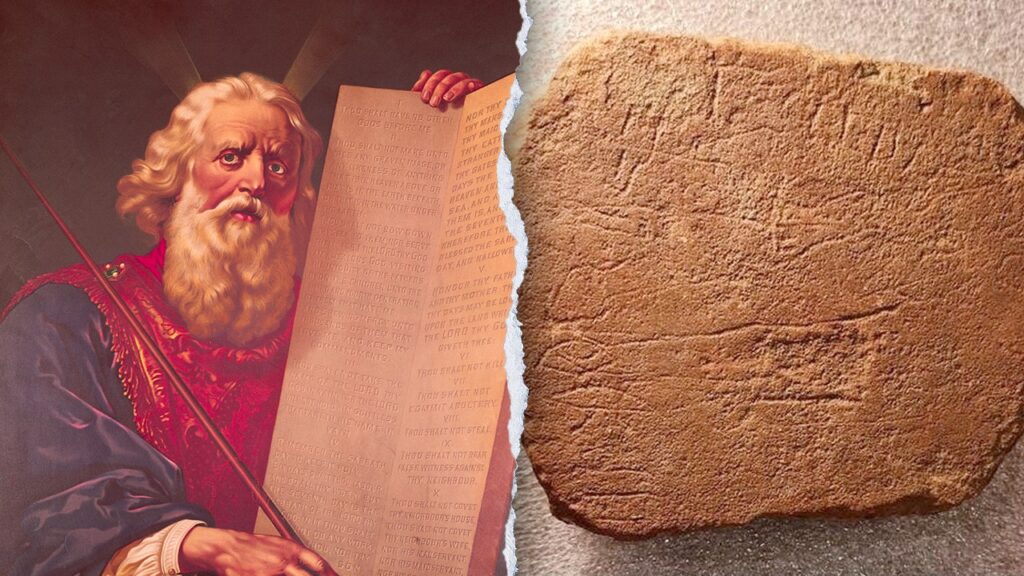NEWYou can now listen to Fox News articles!
A researcher may have uncovered the oldest-ever written references to Moses, dating back 3,800 years and hidden in an Egyptian desert.
The two etchings were found at Serabit el-Khadim, an ancient turquoise mining site in the Sinai desert where Semitic laborers once worked during the Middle Bronze Age.
The Proto-Sinaitic inscriptions date back between 1800 and 1600 B.C.
RARE BIBLICAL SEAL WITH ANCIENT FINGERPRINT FOUND IN DEBRIS FROM JERUSALEM’S TEMPLE MOUNT
They were etched centuries before the earliest parts of the Bible were written between the 10th and 7th centuries B.C.
The two inscriptions, among many at the site, were first discovered in the early 1900s – but they’re now being reanalyzed by an American-Israeli epigraphist named Michael S. Bar-Ron. The expert, who’s also a graduate student at Ariel University, spoke with Fox News Digital about the discovery.
Bar-Ron posits that the inscriptions read “Zot M’Moshe” and “Ne’um Moshe.”
The phrases may mean “This is from Moses” and “Declaration of Moses,” respectively.
If verified, the inscriptions are the earliest written mention of Moses outside the Bible.
The inscriptions also reference El, a deity associated with the Abrahamic God, while censuring the ancient pagan goddess Ba`alat.
If verified, the inscriptions are the earliest written mention of Moses outside the Bible.
Speaking to Fox News Digital, Bar-Ron noted that the Serabit el-Khadim site once housed a temple to Ba`alat.
Some of the etchings, Bar-Ron says, seem to reflect resistance to the goddess’s worship from Semitic workers.

“[Ra]ather than lauding Ba`alat … [the] readings curse out the Ba`alat cult, with words of warning and rebuke to its followers,” Bar-Ron said.
He added, “They include the terms ‘BŠ’ – ‘for shame’ or ‘this is shameful’ – and ‘nimosh,’ [which means] ‘let us leave’ [or] ‘remove ourselves.’”
RARE 1,600-YEAR-OLD MOSAIC FROM CHRISTIAN MONASTERY UNVEILED AFTER CENTURIES OF OBSCURITY
The Herculean task of translating the ancient etchings took nearly a decade, Bar-Ron said.
“I spent eight years actively involved in the painstaking, oft-frustrating reconstruction of some 23 wordy Proto-Sinaitic inscriptions,” the epigraphist noted.
“That is, based on the principles of the foremost greats in the field, and informed by the work of my distinguished colleagues in the field.”

He also believes the “Moses” inscriptions may have a common author, pointing to certain “stylistic points” such as word usage.
Bar-Ron’s larger graduate thesis explores “a Mosaic-type leadership” in the region at the time.
He described the latest revelations about the inscriptions as “non-essential icing on the cake.”
“The finding ‘Zot M’Moshe’ and ‘Ne’um Moshe’ were really last-minute discoveries and non-essential to that subpoint (possible Mosaic authorship), within a much more serious thesis,” he said.
For more Lifestyle articles, visit foxnews.com/lifestyle
Bar-Ron also noted that his findings will be peer-reviewed in the future; his research has already been edited over 100 times.
“If we were drawing such conclusions on the basis of one or two inscriptions, it would be weak,” he observed. “Rather, they are based on what is understood across the full set found at Serabit el-Khadim.”

“I cannot emphasize enough how important it is for educated readers to actually read the proto-thesis itself.”
Excavators have long searched for archaeological evidence of Moses, mostly without success.
Last summer, an ancient sword from the era of the Book of Exodus was uncovered in Egypt.
More recently, a French expert identified ancient “propaganda” praising Ramesses II, the Egyptian leader who may have challenged Moses.
Read the full article here







